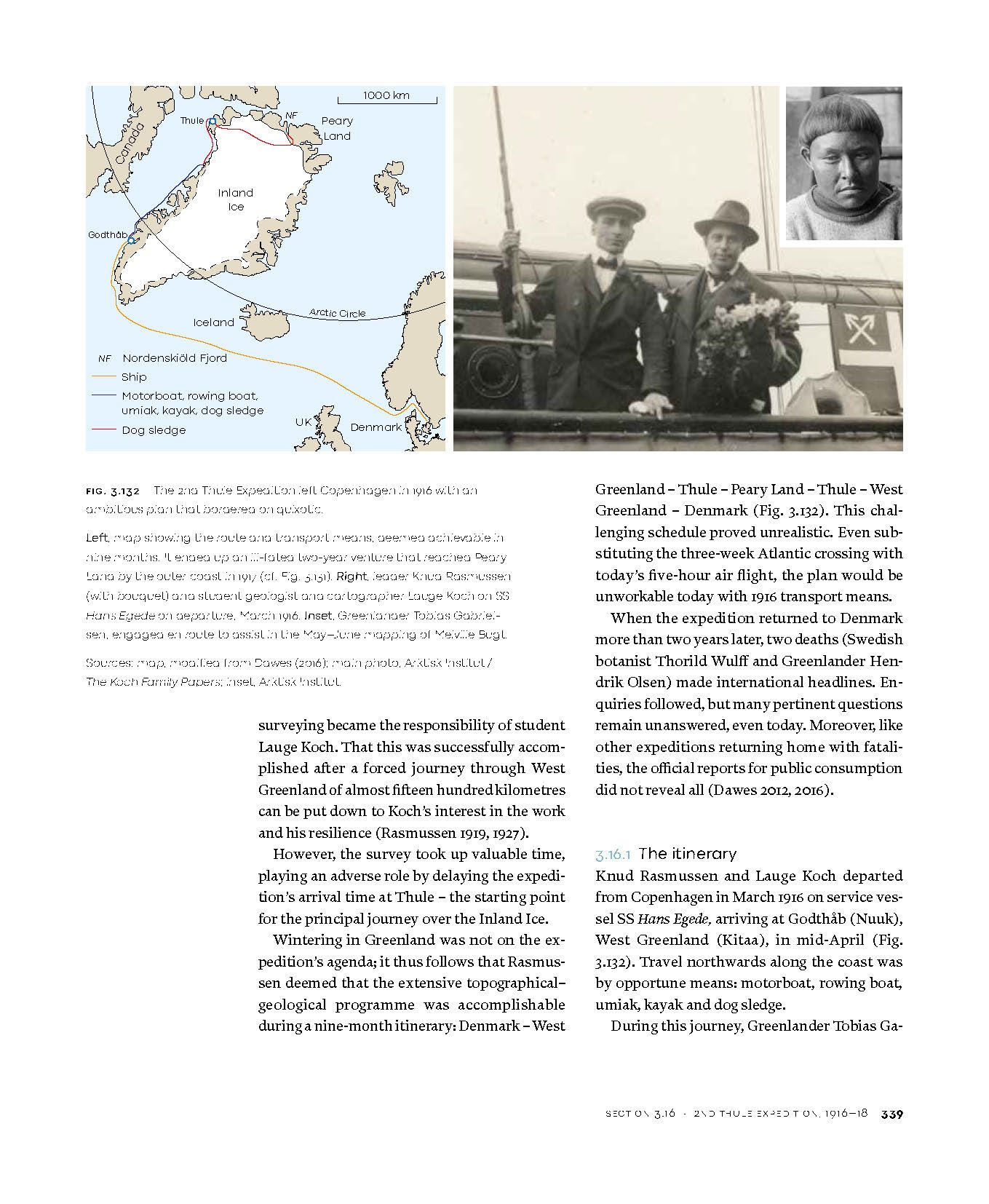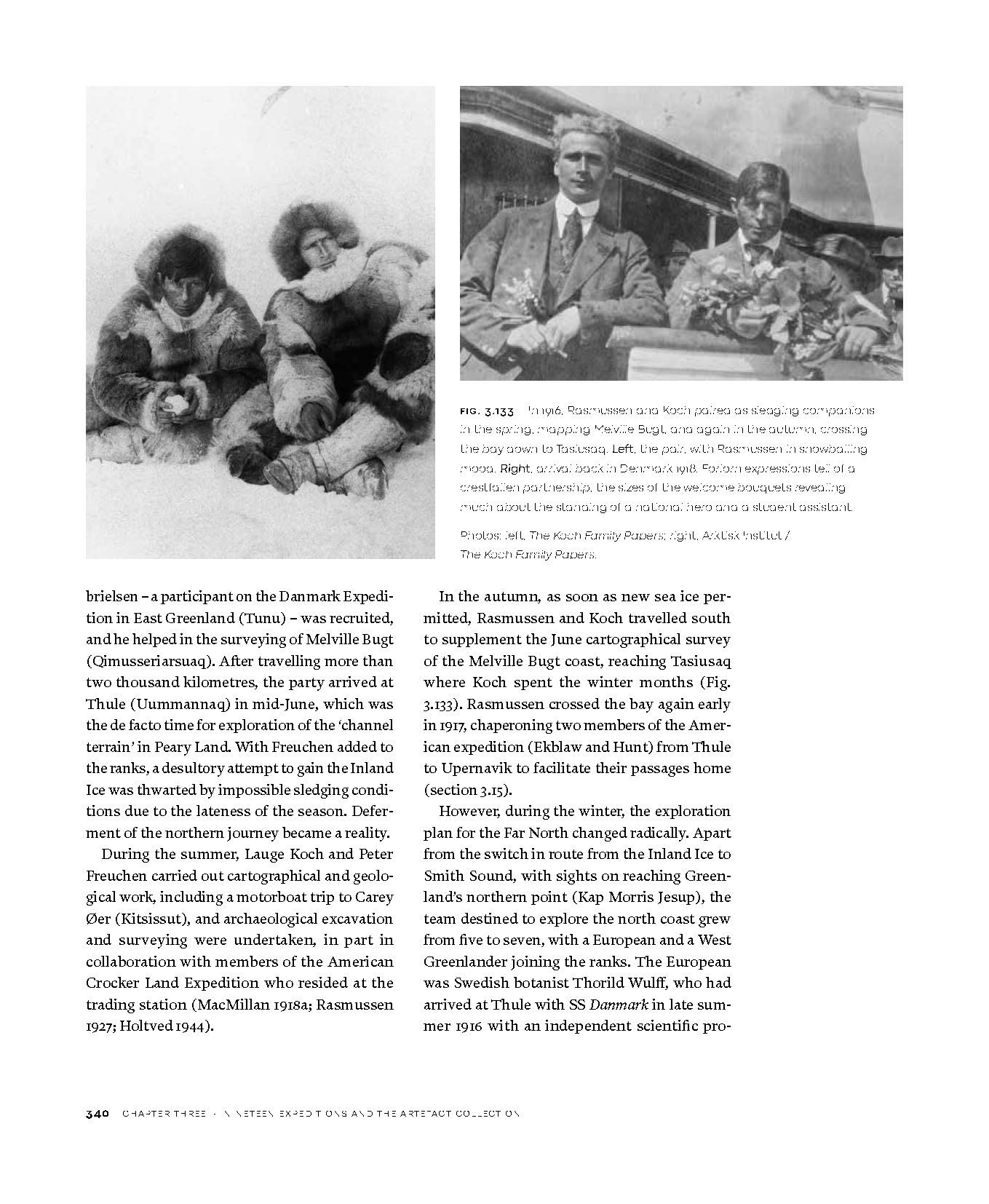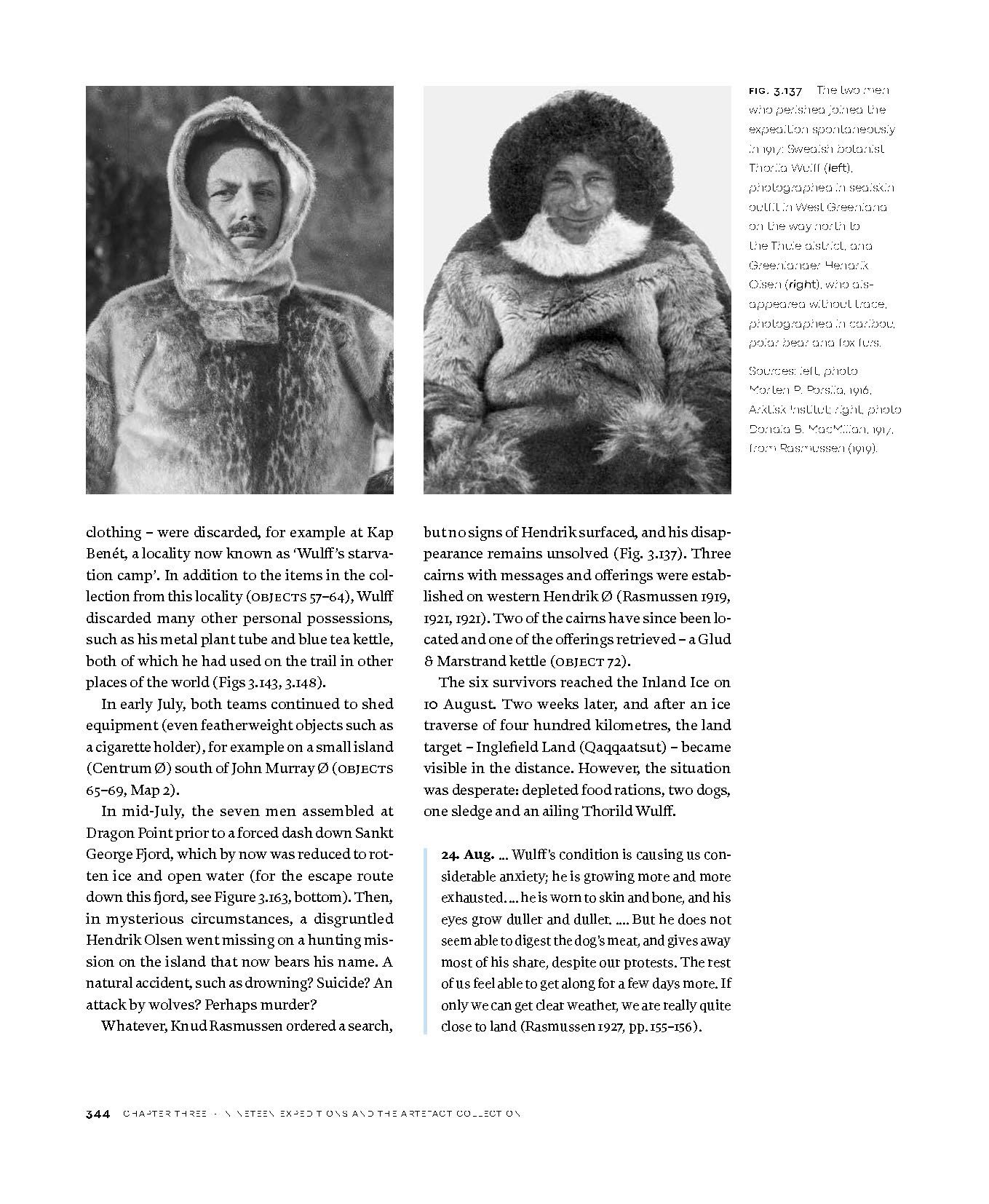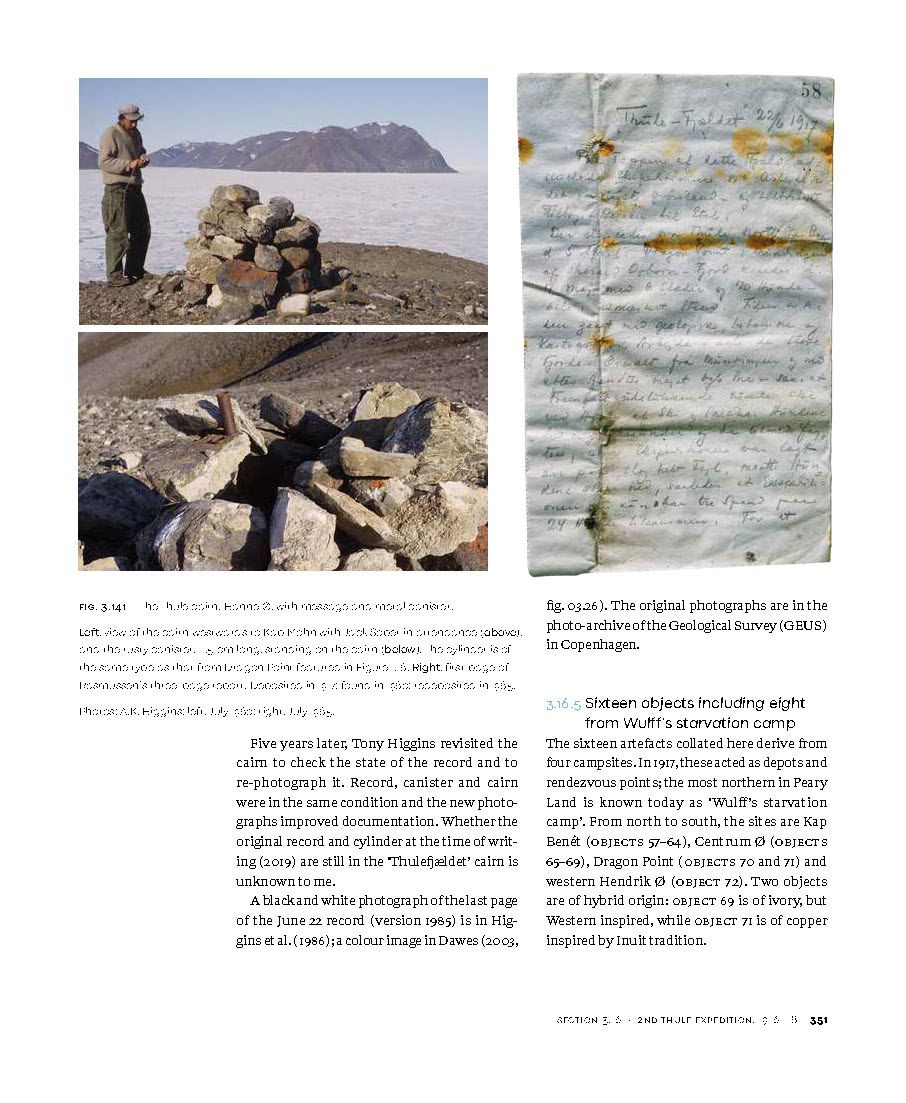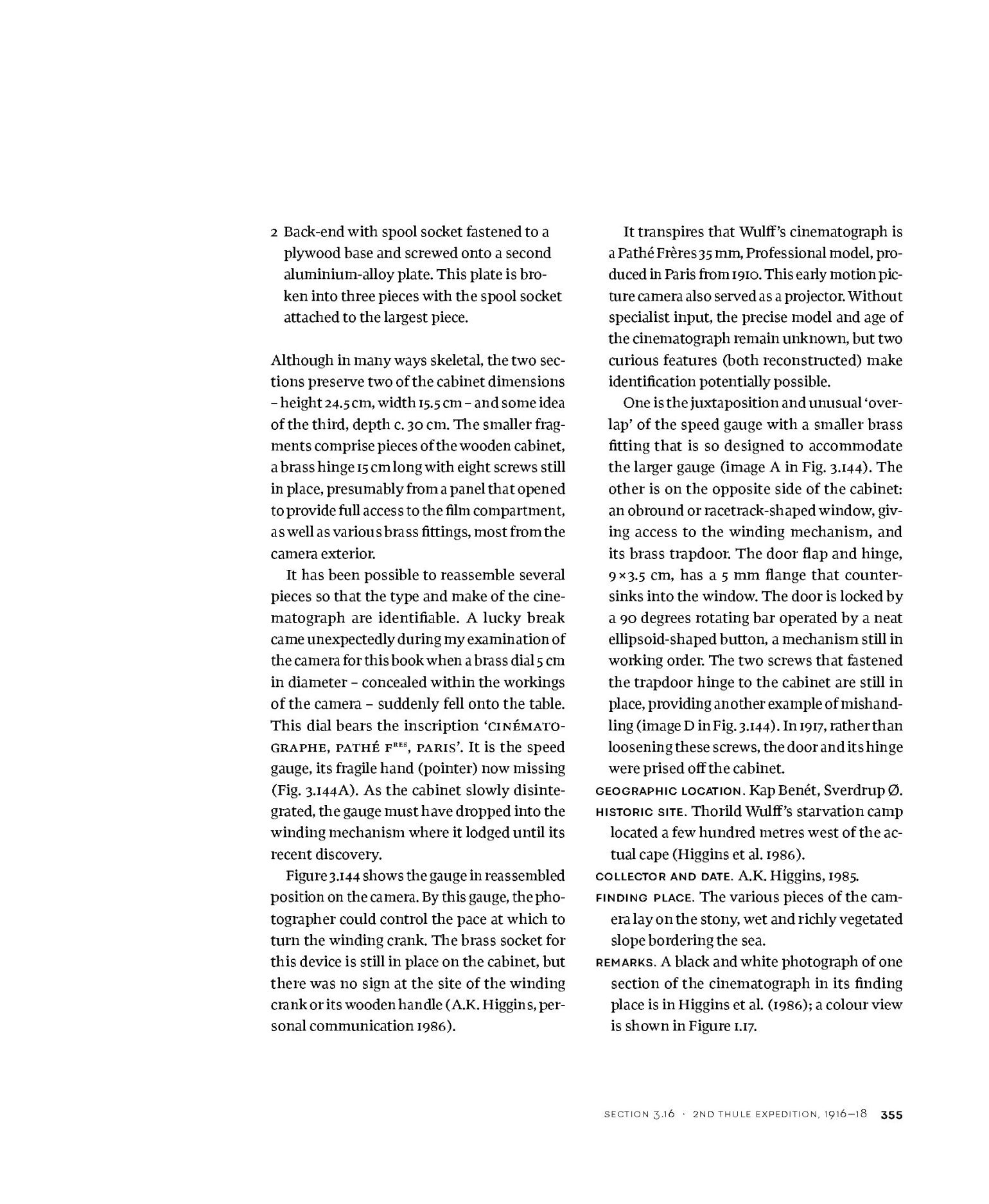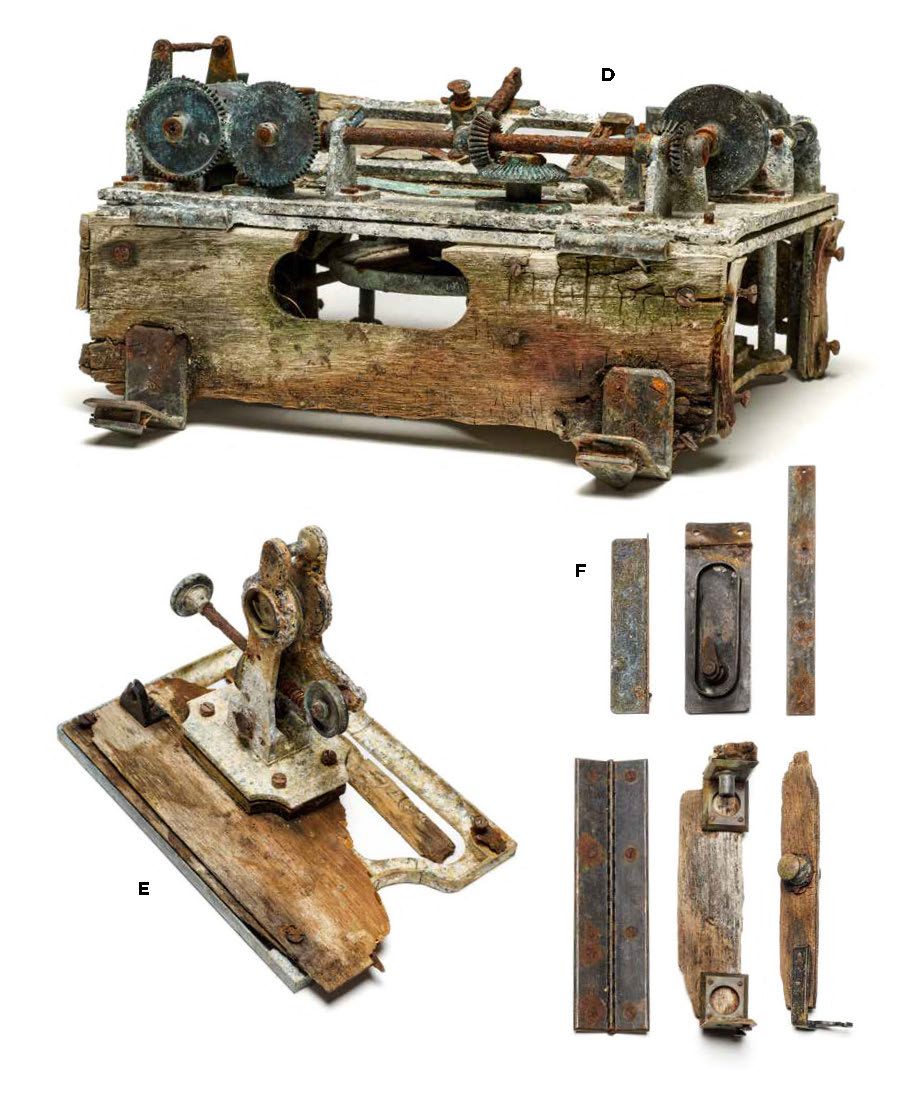Expedition Relics from High Arctic Greenland
Eight Decades of Exploration History, Told through 102 Objects
9788763546867
Distributed for Museum Tusculanum Press
Expedition Relics from High Arctic Greenland
Eight Decades of Exploration History, Told through 102 Objects
A history of Euro-American exploration through 101 artifacts.
Protected by remote tundra, undisturbed artifacts from late nineteenth- and early twentieth-century expeditions into Greenland provide a unique window into the history of exploration. Expedition Relics from High Artic Greenland reveals the grueling story of European-American exploration through 101 of these artifacts—from personal documents and carvings to professional equipment and supplies. Discovered at thirty-two sites along Greenland’s northwest coast, these sundry artifacts chart the history of American, British, and Scandinavian exploration in the Artic from 1853 through 1934. Beautifully illustrated, this book offers unprecedented access to one of the most remarkable eras of geographical discovery.
Protected by remote tundra, undisturbed artifacts from late nineteenth- and early twentieth-century expeditions into Greenland provide a unique window into the history of exploration. Expedition Relics from High Artic Greenland reveals the grueling story of European-American exploration through 101 of these artifacts—from personal documents and carvings to professional equipment and supplies. Discovered at thirty-two sites along Greenland’s northwest coast, these sundry artifacts chart the history of American, British, and Scandinavian exploration in the Artic from 1853 through 1934. Beautifully illustrated, this book offers unprecedented access to one of the most remarkable eras of geographical discovery.
Reviews
Table of Contents
Frontispiece
Foreword by Prof. Bjarne Grønnow, The National Museum of Denmark
Summary
Chapter 1. Introduction and scope
1.1. This book: aims, maps, museums, and published sources
1.2. Exploration background
1.3. The collecting instinct: personal reflections
1.4. From simple labelling to historical study
1.5. Terminology, names, spellings and photo credits
Chapter 2. Prehistoric and historic sites and their artefacts
2.1. The collection: preservation, patina and further research
2.2. Archaeology and artefact types
2.3. What constitutes a ‘historic site’?
2.4. There are cairns and there are cairns
2.5. Expedition stations, native settlements and conservation
2.5.1. The Far North – north of 81°30′N
2.5.2. South of Humboldt Gletscher (Sermersuaq)
2.5.3. Conservation: wood versus stone
2.5.4. Etah (Iita): logistic centre with a long history and prehistory
2.6. Historic sites, graves and early communication
2.6.1. Deaths, graves and gravestones: a complicated subject
2.6.2. Sacrificing a historic burial site for military installations
2.6 3. Buried in Greenland, memorial headboards stranded in Canada
2.6.4. Rock engravings, whaling ships and lichen graffiti
2.6.5. HAP-WILES: black lichen and creative writing in sandstone cobbles
2.7. Guided tours by two outstanding Inughuit
2.8. Mysterious Inuit copper lamp or qulleq at 82°20′N
2.9. British ‘Fort Conger cart’ abandoned in Greenland
Chapter 3. Nineteen expeditions and the artefact collection
3.1. Second Grinnell Expedition in search of Sir John Franklin 1853–55
Objects 1–6
3.2. American Arctic Expedition 1860–61
Objects 7–8
3.3. United States North Polar Expedition 1871–73
Objects 9–15
3.4. British Arctic Expedition 1875–76
Previously archived material (7 items)
Objects 16–28
3.5. United States Lady Franklin Bay Expedition 1881–84
Previously archived material (5 items)
Located but not retrieved cairn records (1 item)
Objects 29–32
3.6. North Greenland Expedition 1891–92
Objects 33–35
3.7. Peary Relief Expedition 1892
Object 36
3.8. North Greenland Expedition 1893–95
Previously archived material (1 item)
Objects 37–41
3.9. Peary Auxiliary Expedition 1894
Previously archived material (1 item)
Object 42
3.10. Peary meteorite expeditions 1896 and 1897
Object 43
3.11. The Peary Arctic Club Expedition 1898–1902
Objects 44–47
3.12. Danish Literary Greenland Expedition 1902–04
Objects 48–49
3.13. The Peary Arctic Club Expedition 1905–06
Objects 50–52
3.14. Crocker Land Expedition 1913–17
Objects 53–56
3.15. 2nd Thule Expedition 1916–18
Previously archived material (6 items)
Located but not retrieved cairn records (1 item)
Objects 57–72
3.16. Bicentenary Jubilee Expedition 1920–23
Previously archived material (1 item)
Located but not retrieved cairn records (1 item)
Objects 73–78
3.17. MacMillan Arctic Expedition 1923–24
Object 79
3.18. Oxford University Ellesmere Land Expedition 1934–35
Object 80
Chapter Four. A tribute to the Inuit and their dog sledges
4.1. Arctic Highlanders and dog sledges
4.2. Expedition dependency on Greenlandic resources
4.3. Benchmarks in Greenlandic participation
4.4. Man–dog relationships and the food chain
4.5. Nukagpiannguaq: one worthy successor to Suersuaq
4.6. The indispensable Inuit
Endpiece
Overview of the 102 artefacts, their collection and depositories
Acknowledgements
Bibliography
Illustration credits
Indices
Index conventions
Index of place names
Index of personal names
Index of subjects
Foreword by Prof. Bjarne Grønnow, The National Museum of Denmark
Summary
Chapter 1. Introduction and scope
1.1. This book: aims, maps, museums, and published sources
1.2. Exploration background
1.3. The collecting instinct: personal reflections
1.4. From simple labelling to historical study
1.5. Terminology, names, spellings and photo credits
Chapter 2. Prehistoric and historic sites and their artefacts
2.1. The collection: preservation, patina and further research
2.2. Archaeology and artefact types
2.3. What constitutes a ‘historic site’?
2.4. There are cairns and there are cairns
2.5. Expedition stations, native settlements and conservation
2.5.1. The Far North – north of 81°30′N
2.5.2. South of Humboldt Gletscher (Sermersuaq)
2.5.3. Conservation: wood versus stone
2.5.4. Etah (Iita): logistic centre with a long history and prehistory
2.6. Historic sites, graves and early communication
2.6.1. Deaths, graves and gravestones: a complicated subject
2.6.2. Sacrificing a historic burial site for military installations
2.6 3. Buried in Greenland, memorial headboards stranded in Canada
2.6.4. Rock engravings, whaling ships and lichen graffiti
2.6.5. HAP-WILES: black lichen and creative writing in sandstone cobbles
2.7. Guided tours by two outstanding Inughuit
2.8. Mysterious Inuit copper lamp or qulleq at 82°20′N
2.9. British ‘Fort Conger cart’ abandoned in Greenland
Chapter 3. Nineteen expeditions and the artefact collection
3.1. Second Grinnell Expedition in search of Sir John Franklin 1853–55
Objects 1–6
3.2. American Arctic Expedition 1860–61
Objects 7–8
3.3. United States North Polar Expedition 1871–73
Objects 9–15
3.4. British Arctic Expedition 1875–76
Previously archived material (7 items)
Objects 16–28
3.5. United States Lady Franklin Bay Expedition 1881–84
Previously archived material (5 items)
Located but not retrieved cairn records (1 item)
Objects 29–32
3.6. North Greenland Expedition 1891–92
Objects 33–35
3.7. Peary Relief Expedition 1892
Object 36
3.8. North Greenland Expedition 1893–95
Previously archived material (1 item)
Objects 37–41
3.9. Peary Auxiliary Expedition 1894
Previously archived material (1 item)
Object 42
3.10. Peary meteorite expeditions 1896 and 1897
Object 43
3.11. The Peary Arctic Club Expedition 1898–1902
Objects 44–47
3.12. Danish Literary Greenland Expedition 1902–04
Objects 48–49
3.13. The Peary Arctic Club Expedition 1905–06
Objects 50–52
3.14. Crocker Land Expedition 1913–17
Objects 53–56
3.15. 2nd Thule Expedition 1916–18
Previously archived material (6 items)
Located but not retrieved cairn records (1 item)
Objects 57–72
3.16. Bicentenary Jubilee Expedition 1920–23
Previously archived material (1 item)
Located but not retrieved cairn records (1 item)
Objects 73–78
3.17. MacMillan Arctic Expedition 1923–24
Object 79
3.18. Oxford University Ellesmere Land Expedition 1934–35
Object 80
Chapter Four. A tribute to the Inuit and their dog sledges
4.1. Arctic Highlanders and dog sledges
4.2. Expedition dependency on Greenlandic resources
4.3. Benchmarks in Greenlandic participation
4.4. Man–dog relationships and the food chain
4.5. Nukagpiannguaq: one worthy successor to Suersuaq
4.6. The indispensable Inuit
Endpiece
Overview of the 102 artefacts, their collection and depositories
Acknowledgements
Bibliography
Illustration credits
Indices
Index conventions
Index of place names
Index of personal names
Index of subjects




